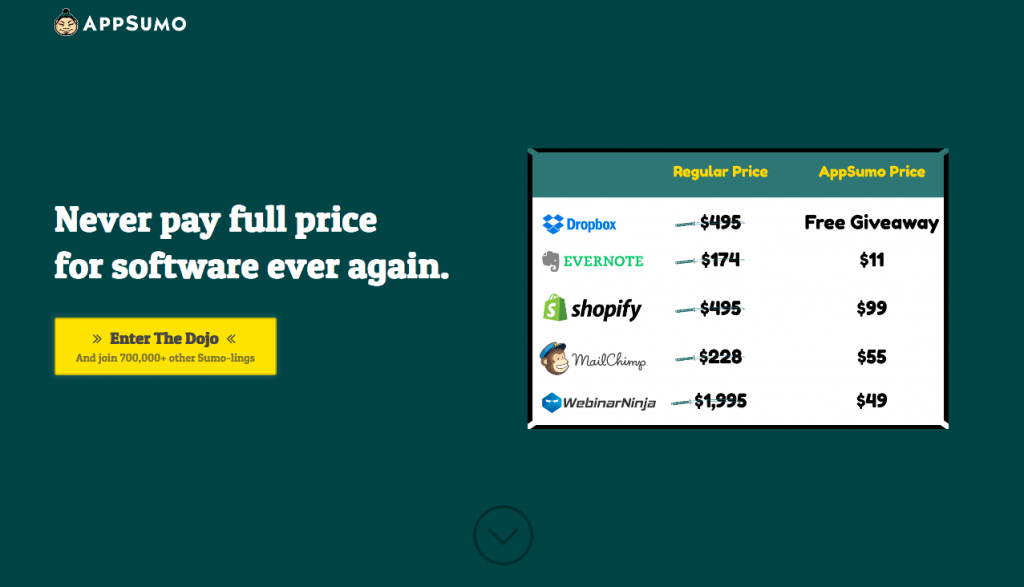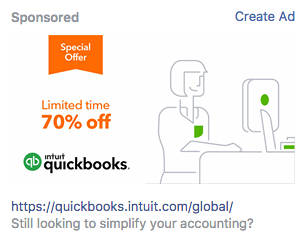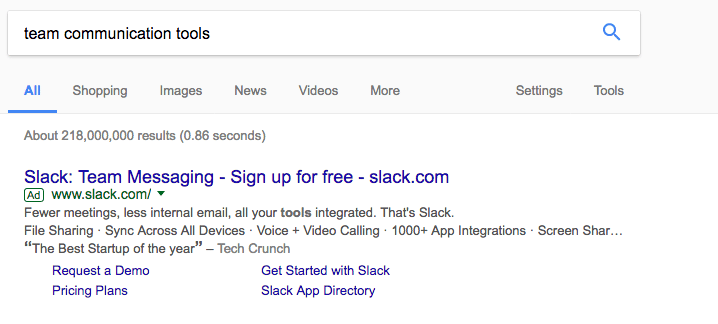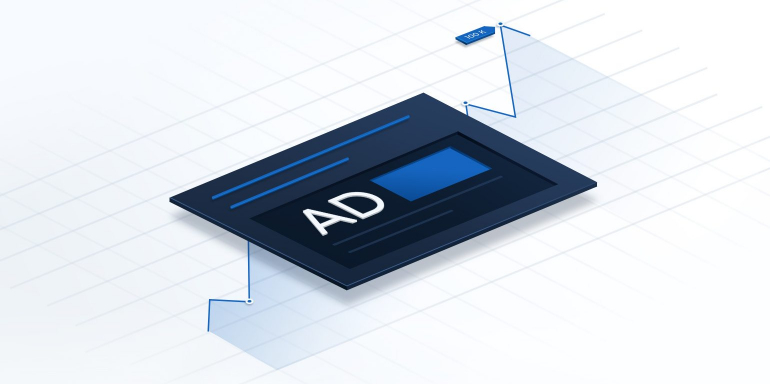Did you know that the triangle is the strongest shape found in nature? Any added force on a triangle is evenly spread through on all three sides – the more added force, the stronger the triangle.
It’s no coincidence the Egyptian Pyramids are actually just gigantic triangles, or that the Eisenberg brothers’ optimization hierarchy fits neatly into a triangle as well.
Before we get into the detail of the optimization pyramid and how your ad optimization fits in, let’s do a refresher on what optimization is:
Optimization, in digital marketing, is the process of improving a campaign or part of it (web page, advertisement, post-click landing page) to the point that it’s as near-perfect as it can get. Optimization starts with continuous testing, and data collection, and ends with making improvements to campaigns based on those results.
The end goal of optimization is conversion, getting there, however, requires you to perfect each component of your marketing campaigns, starting with your ad.
What is ad optimization?
All online ads are divided into two basic categories:
Search ads
These ads are generated by search engines such as Google and Bing after a user types in their search query. Search ads are user prompted ads and should be created based on user intent.
This is what a typical Google search ad looks like:

Display ads
Display ads are also known as banner ads, and they appear on websites as a user is browsing online.
The ads are prompted by the user’s search history and online behavior. Remarketing campaigns use display ads to call back lost visitors.
This is what a typical Google display ad looks like:

Ad optimization refers to the process of creating ads that are relevant to users who see your ads and then perfecting these ads informed by data collected through A/B tests and user testing.
But, if you’re just starting out with creating ads you need to start somewhere, and this is where ad optimization techniques come in.
The optimization process includes using ad optimization techniques that perfect both ends of your ads for better user experience:
- Ad optimization frontend: This includes the ad the user gets to see and involves creating persuasive ad copy using a relevant image and a CTA button. It also includes adding ad extensions for detail in the case of search ads.
- Ad optimization backend: This includes the keywords you use for your ad based on user intent and the targeting options you select in your advertising platform keeping in mind your buyer personas.
Your ad is optimized for the user only when you’ve taken care of the both the frontend and backend of ad optimization. To ensure that your ad optimization is strong enough to result in a higher click-through rate and eventually lead to conversions post-click, let’s see how it fits into the optimization hierarchy pyramid.
What is the optimization hierarchy pyramid?
Developed by the Eisenberg brothers, the optimization hierarchy pyramid showcases the levels your optimization must have to make an impact on potential customers and guarantee conversions.
The pyramid is made up of 5 levels, and each level must be achieved to ensure your optimization is the strongest. Going through these steps can convince potential customers to take the desired action – which in this case is an ad click.
Here’s what the optimization hierarchy pyramid looks like:

Let’s look at each level individually regarding ad optimization.
Functional
This level deals with the functional aspect of the ads, i.e., do your ads work properly. If your display ads have animations, do they load properly and make for a good user experience?
Do your search ad extensions work properly when a user clicks the click-to-call button can they actually place a call?
Fixing functional errors may seem like low hanging fruit, however, when your ads function properly you have the potential to have high conversion rates.
Accessible
Accessibility deals with responsiveness. Are your ads responsive? Do they adjust their size, appearance, and format to fit into all screen sizes?
Google Ads introduced responsive ads for the Google Display Network in January 2017. The size, appearance, and format of responsive ads are tailored to match the look and feel of the web page they appear on your targeting options, and the campaign goals you have set.
The responsive ads are a hybrid of image, text and native ads, and look something like this:

Accessibility regarding ad optimization also deals with targeting options you’ve selected in your chosen advertising platform. You need to ensure that your ad is accessible or is being shown to your target audience at the right time.
When selecting keywords for your Google search ad campaign keep in mind user intent. You should also use negative keywords to rule out keywords that aren’t relevant to your campaign ensuring better ad targeting.
As far as targeting options for display ads, Google Ads gives you the following options for your brand campaigns:

Facebook gives you the option to focus specifically choosing demographics, location, interests, and behaviors. You also may choose three types of audiences:
- Core Audiences: You can select your audience manually based on their demographics, and location, etc.
- Custom Audiences: Simply upload your contact list to Facebook and connect with your customers on the social network.
- Lookalike Audiences: Use your customer information to find people similar to them on Facebook and show them your ads too.
To ensure your ad is accessible make sure it can be seen by your target audience on all devices.
Usable
Your ad should have a good user experience. A good ad user experience involves:
- Relevance: Is the ad relevant to the audience it’s being shown to.
- Efficiency: For display ads to be efficient, their images or other media need to load properly. Efficiency regarding search ads refers to the optimum use of ad extensions and making it as easy as possible for users to understand it.
- Non-intrusive: Ads should be non-intrusive. They shouldn’t disrupt what the user was doing because this decreases the chances of them clicking on your ad. Don’t automate play functions for your video and audio ads because all they do is startle the visitor (which is not a good persuasion technique.) If your ad opens up as a pop-up, the exit button should be visible so that users who don’t want to click it can simply close it.
- Legible: The ad copy you use should be easily understandable by users. For display ads, make sure the ad copy is readable on your ad background and that the CTA button contrasts with the background.
Intuitive
In the optimization, hierarchy intuitiveness refers to matching user expectations with their place in the customer journey. It also relates to reducing barriers to entry between one stage of the client’s journey and the next.
To make sure your ad is intuitive, ask yourself the following questions:
- Does your ad copy match what the users had in mind when they typed in a search query?
- Do your display ads; especially your remarketing display ads effectively capture user attention?
To ensure your remarketing display ads work, you must to segment your audience and then show those segments of your audience personalized ads that are relevant to the experience they had when they interacted with your page.
Message matching also plays a prominent role in making your ad intuitive, as you need to consider the entire customer journey.
Message matching refers to the process of matching your ad content with the post-click landing page it is connected to. The message is reinforced in the mind of the prospect, and they know it’s relevant.
Optimization requires customers to transition from one digital asset to the next, and connecting ads to dedicated post-click landing pages ensure that their transition is seamless.
Let’s look at the AppSumo Facebook ad and connecting post-click landing page as an example.
Here’s what the ad looks like:

- The ad headline catches user attention by mentioning the price and how you don’t have to pay full price for software.
- The image of a sumo-esque pirate is pretty on-point and relevant.
- The copy gives users a taste of what they can expect to find out when they click the ad.
This is the post-click landing page the user is directed to after the ad click:

- The post-click landing page headline reinforces the same message as the ad. This connects the two pieces of the digital marketing puzzle and reassures the visitor that they’ve landed in the right place.
- The logo has the same sumo person, another factor that adds relevance.
- The post-click landing page delivers what the ad promised which adds to the brand’s credibility and increases chances of conversions.
It is important to optimize the pre-click and post-click landing page for your ads to actually make an impact.
Persuasive
A compelling ad is an ad that effectively communicates your offer, improves user motivation, and persuaded them to click. For your ad to be convincing it needs to reduce friction and influence visitors to click.
Creating persuasive optimized ads requires you to add certain elements. Let’s discuss how you can optimize your Facebook and Google Ads.
Facebook ad optimization
The platform allows you to create ads in 6 formats:
- Image ads: Image ads include an image and few lines of ad copy.
- Video ads: You can feature product videos in your Facebook video ads.
Carousel ads: These ads let you showcase up to 10 images or videos in a single ad. - Collection ads: The collection ad format allows you to combine video, slideshow, and images. Users can actually browse through collection ads to see if they find something worth clicking.
- Slideshow ads: Slideshow ads let you tell a story by combining text, sound, images, and videos.
- Canvas ads: These ads are mobile-only ads that can be used on mobile devices to showcase products or call back lost visitors with remarketing.
An optimized Facebook ad has the following characteristics:
Visual
Visual content works wonders on Facebook because it is treated more favorably in Facebook’s ad optimization algorithm. Visual content also has better recall and appeal. Make sure the visuals you use in your Facebook ad are relevant to the offer the ad is promoting and also maintains message match with the post click post-click landing page.
This is what Your Sweet Spot Strategy’s Facebook ad and corresponding post-click landing page do:


Relevant
Your ads need to be relevant to the audience who see your ads. Ads which are of interest to the audience obtain a higher relevance score and are treated more favorably by Facebook.
This CoSchedule Facebook ad gets points for relevancy because it’s a remarketing ad that started showing after I exited the CoSchedule website:

Unique Value Proposition
Your value proposition is what entices users to click your ad. The ad copy should mention what you’re offering, and it should do so in a persuasive manner. Adding social proof and statistics in your ad copy make it more credible, increasing the number of clicks your ad will get.
Klipfolio’s UVP is explicitly mentioned in their ad headline, ‘build and track KPIs on a custom dashboard:

Clear call-to-action button
Your Facebook ad should have a clear and contrasting call-to-action button that gets visitors to click. You can include urgency to your button copy or offer a discount to make your ad more enticing.
This is what Quickbooks does:

Create persuasive Facebook ads by adding the ad above components.
Google Ads optimization
An optimized Google search ad should have the following characteristics:
Persuasive and relevant ad copy
When creating ad copy, think like your customer and showcase your offer clearly: keeping in mind what the customer would want to know.
Also, keep your offer in mind – what does your product do? How does it help visitors solve their problem? What differentiates you from the competition? Create ad copy that answers these questions.
The ad copy should also be relevant to the user’s search query.
A Google search for ‘team communication tools’ shows Slack’s ad that is relevant to the search query phrase and features a testimonial and a description of what the tool can do:

Use ad extensions to add details
Ad extensions allow you to add details to your search ads. Some ad extensions you can use include location extension, callout extension, call extension and review extension.
Marketo’s search ad uses the review extension to feature a review by G2 Crowd:
An optimized Google display ad should have the following characteristics:
Persuasive ad copy
Your display ad copy should feature your unique value proposition clearly to convince users to click.
Funnel’s ad copy features persuasive copy:

Relevant image
The image you use in your display ads should be relevant to your offer. The overall design aesthetic of your ad should go well with your branding to add credibility to your offer.
Jumpshot’s display ad uses a relevant image of analytics on an ad that’s promoting customer-centric analytics, plus the overall ad design is on brand:

Contrasting CTA button
A call-to-action button should be able to call out to users to click the ad. This can easily be done by creating a CTA button design that contrasts with the page background and adding actionable button copy that is relevant to the offer.
This is what Salesforce does with their CTA button:

Create better marketing campaigns with ad optimization
The first interaction your potential customer has with your brand is most commonly on your ad. Ad optimization helps you make the right impression on your audience and optimizes the rest of their conversion journey.
Optimized ads are relevant, have action-oriented copy and are descriptive so that they stand out and the visitor feels compelled click them. For your ads to be truly optimized you need to connect them to relevant post-click landing pages, as these dedicated pages ensure that you don’t lose the visitor at the ad, but, they progress further down the marketing funnel.
Always connect all your ads to personalized post-click landing pages to lower your cost per customer acquisition. Start creating your dedicated post-click pages by signing up for an Instapage Enterprise demo today.

See the Instapage Enterprise Plan in Action.
Demo includes AdMap™, Personalization, AMP,
Global Blocks, heatmaps & more.
